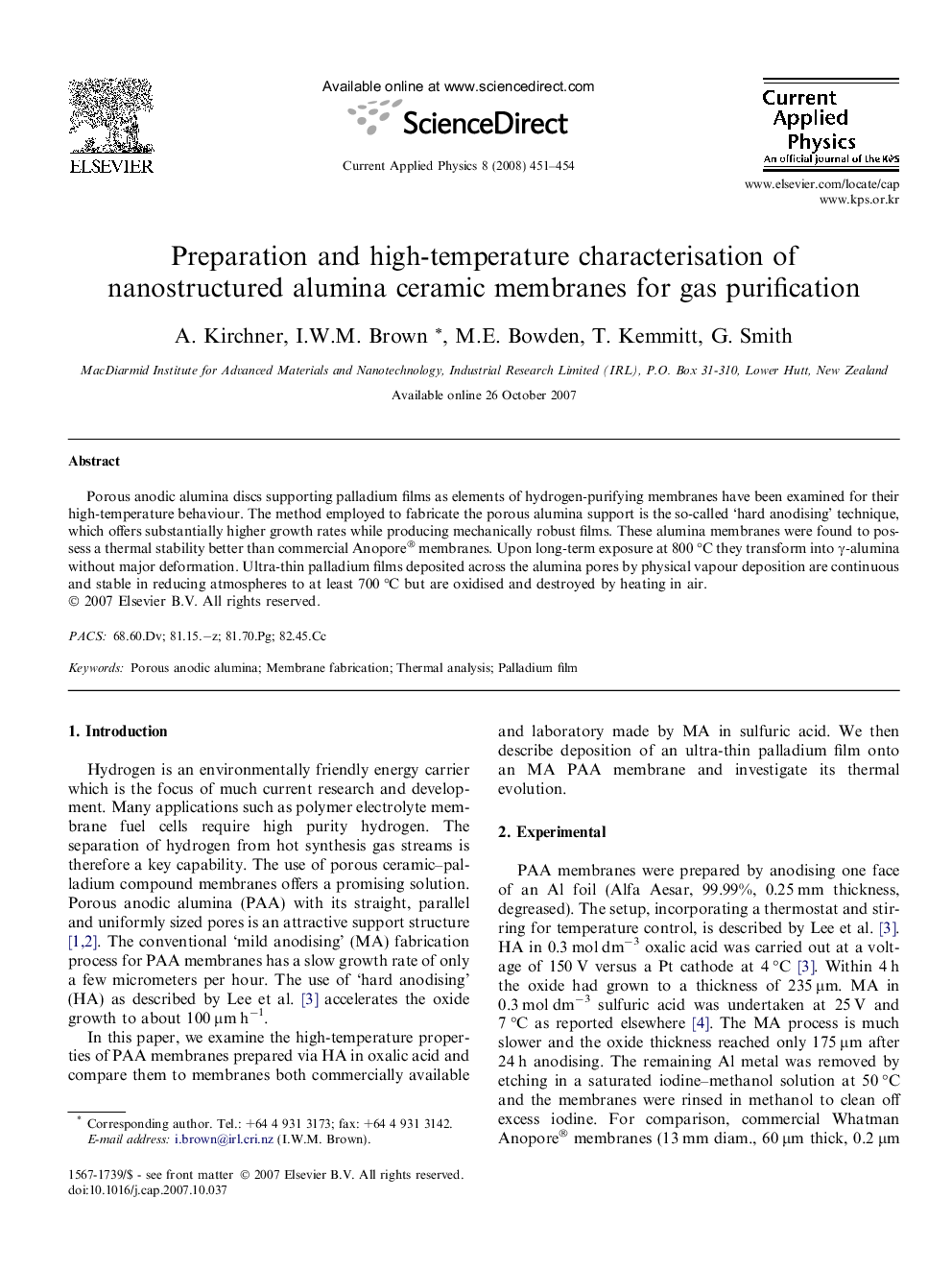| Article ID | Journal | Published Year | Pages | File Type |
|---|---|---|---|---|
| 1788516 | Current Applied Physics | 2008 | 4 Pages |
Porous anodic alumina discs supporting palladium films as elements of hydrogen-purifying membranes have been examined for their high-temperature behaviour. The method employed to fabricate the porous alumina support is the so-called ‘hard anodising’ technique, which offers substantially higher growth rates while producing mechanically robust films. These alumina membranes were found to possess a thermal stability better than commercial Anopore® membranes. Upon long-term exposure at 800 °C they transform into γ-alumina without major deformation. Ultra-thin palladium films deposited across the alumina pores by physical vapour deposition are continuous and stable in reducing atmospheres to at least 700 °C but are oxidised and destroyed by heating in air.
